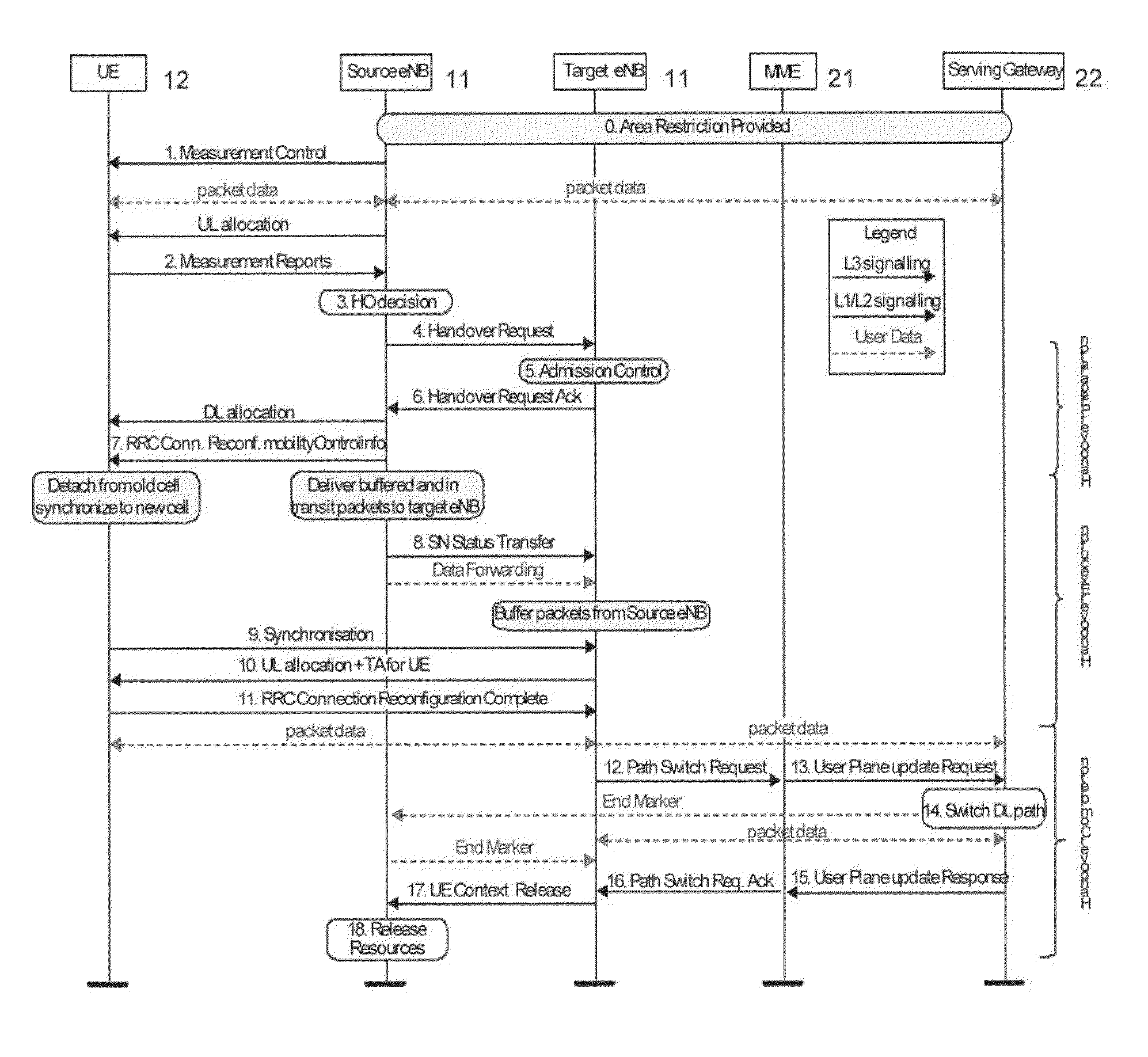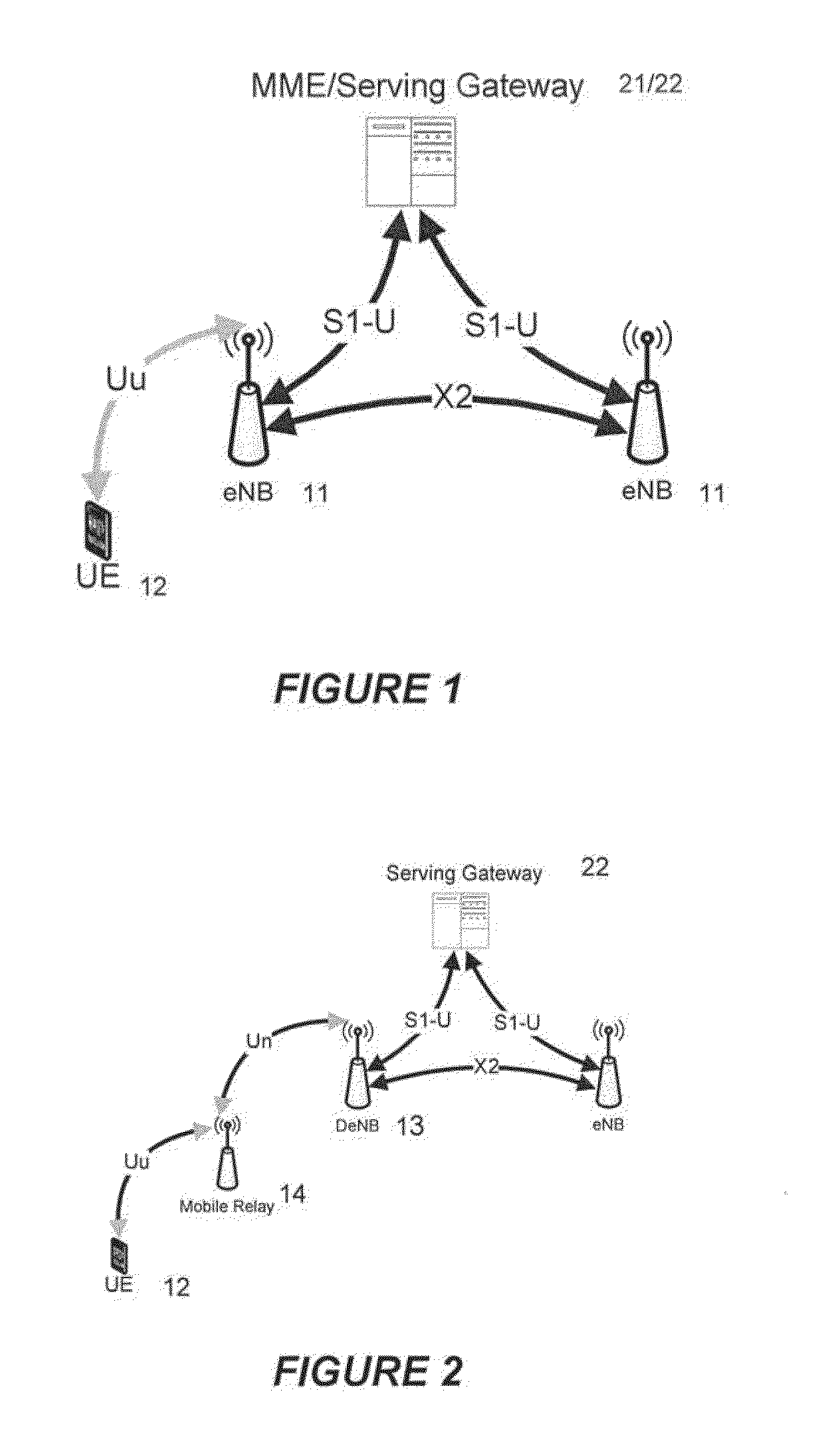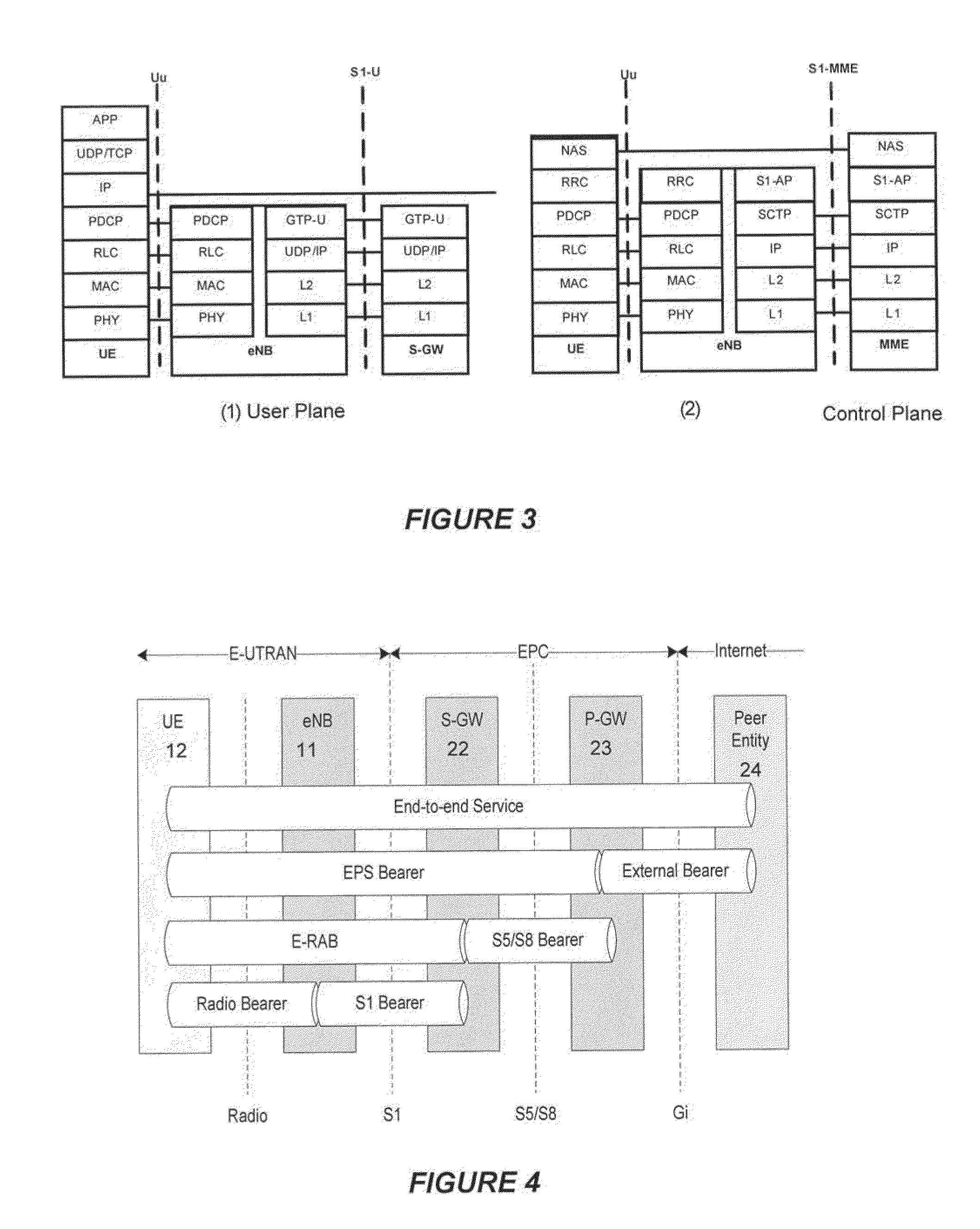Handover With Mobile Relays
a mobile relay and handover technology, applied in the field of handover methods, can solve the problems of relatively low speed of mobile relays, and achieve the effects of good neighbour cell signal quality, poor signal quality of link to the ue, and poor signal quality of neighbour cell (potential donor base station)
- Summary
- Abstract
- Description
- Claims
- Application Information
AI Technical Summary
Benefits of technology
Problems solved by technology
Method used
Image
Examples
case 1
)
[0091]2.1. In case 1), the UE sends measurement reports to the serving eNB (e.g. Cell_A in FIG. 8) that handles control signalling.
[0092]3.1 Cell_A makes HO decision to initiate the handover procedure towards the most suitable neighbour cell MR_2. Because the Cell_A continues handling this UE's control signalling, only data traffic needs to be handed over to the target cell. For this purpose, Cell_A sends cell activation request to MR_2 (that is a mobile relay currently connected the Cell_A), in which the concerned UE's context is included as well as the current serving cell for data traffic MR_1′.
[0093]4.1 MR_2 performs admission control, and sends acknowledgement to confirm the handover.
[0094]5.1 Cell_A sends de-activation request to MR_1′ asking MR_1′ to handover the data traffic of the concerned UE to the target cell MR_2. MR_1′ acknowledges the request.
[0095]6.1 Cell_A sends data plane only handover command to the UE and asks the UE to connect to target cell MR_2 for data traf...
case 2
)
[0098]2.2. In case of 2), the MR_1′ sends measurement reports to the serving eNB (e.g. Cell_A in FIG. 9) that handles control signalling when the signal quality of the link to the UE is worse than a certain threshold.
[0099]3.2 Cell_A makes HO decision based on the measurement report for MR_1′ concerning the UE. Taking into account of the UE's report, Cell_A initiates the handover procedure towards the most suitable neighbour cell MR_2. Because the Cell_A continues handling this UE's control signalling, only data traffic needs to be handed over to the target cell. For this purpose, Cell_A sends cell activation request to MR_2 (that is a mobile relay currently connected the Cell_A), in which the concerned UE's context is included as well as the current serving cell for data traffic MR_1′.
[0100]4.2-8.2. These are the same as steps 4.1-8.1 mentioned above.
case 3
)
[0101]FIG. 10 shows the process of handover by Cell_A of UEs currently served both by itself (for control plane signalling) and by MR_1′ (for data traffic transmission). Such handovers need to take place before Cell_A hands over MR_1′ itself to Cell_B (not shown here).
[0102]2.3. In case of 3), the MR_1′ sends measurement reports to its donor base station when the signal quality of a neighbour cell (i.e. Cell_B in FIG. 10) is much better than the current donor base station (i.e. Cell_A).
[0103]3.3 Before Cell_A starts handover preparation for the MR_1′ towards Cell_B, it needs to handover to MR_2 the UEs currently served by both itself (for control plane signalling handling) and MR_1′ (for data traffic transmission). Cell_A makes HO decision for such UEs based on the measurement report from the UE and initiates the handover procedure towards the most suitable neighbour cell MR_2. Because the Cell_A continues handling this UE's control signalling, only data traffic needs to be handed ...
PUM
 Login to View More
Login to View More Abstract
Description
Claims
Application Information
 Login to View More
Login to View More - R&D
- Intellectual Property
- Life Sciences
- Materials
- Tech Scout
- Unparalleled Data Quality
- Higher Quality Content
- 60% Fewer Hallucinations
Browse by: Latest US Patents, China's latest patents, Technical Efficacy Thesaurus, Application Domain, Technology Topic, Popular Technical Reports.
© 2025 PatSnap. All rights reserved.Legal|Privacy policy|Modern Slavery Act Transparency Statement|Sitemap|About US| Contact US: help@patsnap.com



